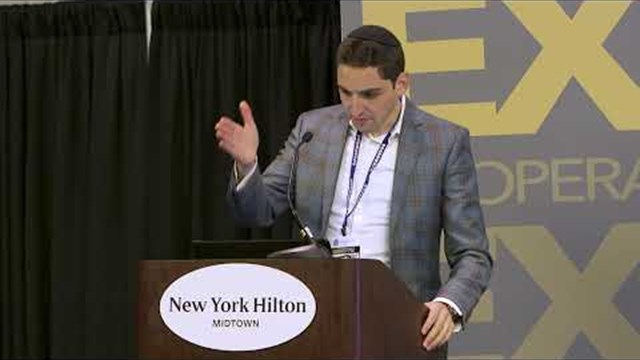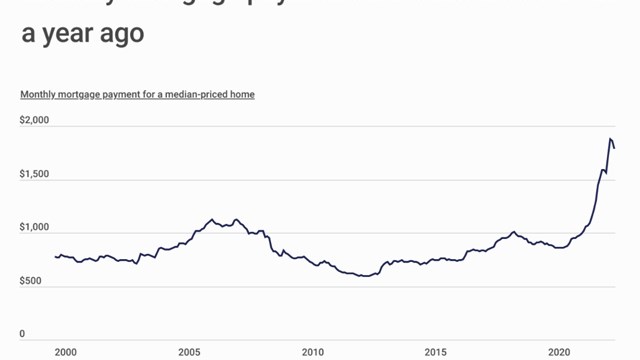After a long period of low rates marked by high levels of activity in financing, the dramatic climb in interest rates over the past two years has presented challenges for co-op buildings faced with refinancing their underlying permanent mortgages. Higher rates mean higher monthly payments. Higher monthly payments may translate to higher maintenance charges. Higher maintenance charges may amplify the already increased costs of ownership, affecting both the ability of existing co-op shareholders to afford their units, and their ability to sell at a price they can accept.
A Brief Recap
The cycle of inflation that began in the spring of 2022 can be directly traced to actions taken during the COVID-19 pandemic to keep the economy from collapsing. The government took a two pronged approach: One prong provided emergency income to individuals, families, and businesses to keep the economy flowing. The other kept interest rates near zero to relieve pressure on families and businesses who needed to borrow. The combination of the two ultimately resulted in inflationary pressure; too much money flowing too cheaply and too quickly. To tame that inflation, the Federal Reserve began raising rates to cool the economy.
Refinancing Woes
“Co-op buildings often have underlying mortgages,” says Mark Hakim, an attorney with Schwartz Sladkus Reich Greenberg & Atlas, located in New York City. “The debt service for the underlying mortgage is factored into the maintenance. During the historically low interest rate climate we have seen for over a decade, most, if not all, cooperative corporations, rightfully, refinanced those mortgages. Even those with prohibitive prepayment penalties have likely been refinanced in the past decade. The underlying cooperative mortgages, more often than not, have shorter maturity dates than those for residential end loans. So, it would not be uncommon for such cooperative mortgages to have maturity dates of 5, 7 or 10 years. This means, in reality, that many of those very low interest loans are now, in this higher interest period, coming due, leaving buildings scrambling to determine what their financial needs are and how to pivot and account for what would be higher debt service for the shareholders.”
Options
If a co-op corporation is facing a refinance at higher interest rates they have limited options as to how to control the higher costs associated with the new refinance. One is to absorb the cost through an increase in maintenance. A second is to assess the shareholders to pay down the face amount of the refinance to decrease the monthly payments passed through to the shareholders. A third is to use reserves to pay down the face amount of the mortgage. None of these options are without potential downside.
“Boards have limited options as they must refinance,” says Hakim. “The loan is maturing. They must now analyze the best way forward with new and likely higher rates and corresponding increased debt service. The options are quite limited for coops as the majority of their income is from its tenant shareholders. Boards have to balance maintenance increases, assessments, reduction of reserves and the like to attend to the needs of the building. Some boards may opt to pay down the mortgage to a point where the lower principal (and higher rate) is comparable to that before the refinancing – however, the building must have ample reserves to do that. It is certainly a balancing act – trying to keep maintenance down and maintain the values of the individual apartments which are often tied to monthly charges.”
Hakim points out that, “often, purchasers of co-ops have to contend with their own balancing act – making sure the various income to debt ratios are met and the higher the maintenance/assessment, the more difficulty some purchasers may have to qualify, particularly if they are obtaining financing.” Therefore, the idea of an assessment to attend to many of these issues is often more palatable than a maintenance increase as the former is often intended to be temporary.”
Lesser-Known Alternatives
In the minutia of real estate finance, co-op corporations may find some relief in lesser known manipulations to reduce monthly debt service costs. One option is to extend the amortization period of the mortgage from the standard twenty-five years to as long as fifty years, or to eliminate amortization altogether in favor of an interest-only mortgage. As loan-to-value ratios are so low in co-op properties, some lenders may be willing to consider this option. The reduction in or elimination of principal repayment in the monthly debt service may eliminate in whole or in part the increased interest rate costs.
Another option, though rarely used in commercial real estate finance, is to pay down or discount the interest rate on the loan by paying ‘points.’ With large mortgages this may be just too costly an option as the points are paid up front.
Another important consideration today is to take a new mortgage with an open prepayment penalty. Many co-op underlying mortgages were refinanced with no prepayment permitted to get the lowest possible rate. The flexibility of prepayment options, even with a small prepayment penalty attached, gives the co-op the option to get out of a higher interest rate loan if rates drop substantially again.
Sage Advice
“These days,” says Hakim, “with the higher rates, I recommend, to the extent possible, either taking out a mortgage that allows for a prepayment or consider a loan with a shorter term or hold off refinancing a bit if it is possible. It is believed that interest rates may fall somewhat and it would be a shame if a building is stuck in a long term high interest rate. That said, the board must consider all factors as no two buildings or loan products for a building are alike. A building may have immediate financial needs without the luxury of waiting or obtaining a more favorable product. It is important for boards to consult with their financial and legal advisors and come up with a viable plan for the immediate and not so immediate future, all while communicating openly with the shareholders to keep them apprised of everything.”










Leave a Comment